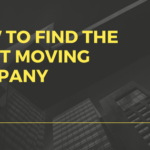Each day brings new business data. Some managers have started to complain about the constant influx of data concerning operations, sales, finance, etc. Can you imagine business leaders being annoyed by too much information? Ten, even five, years ago people paid great sums to accumulate as much data about their business as possible. Today, people have started talking about information overload and data fatigue. We are living in an age of ever greater amount of information that we can assemble from a wide variety of sources. But the problem isn’t about data itself after all. Nor the sheer amount of bits and bytes entering our consciousness.
The real problem is data source diffusion. You have your marketing insights on one platform, the operation reports are on another, and you aren’t too sure where the latest financial spreadsheets exactly are. In other words, the data doesn’t stress the managers, it’s the data distribution over many platforms, files, and programs. Business dashboards bring smart solutions, penetrating the core of this well-known problem.
Essentially, a business dashboard is a tool that lets you manage all the important business information. You can have an overview of the metrics, KPIs, and numerous other data concerning your business as a whole or focusing only on one particular process. Every good business dashboard provides rich visualizations to crunch the complex data and allow a user to have a simplified, yet concise overview of the key metrics. Let’s look at some of the providers below.
Datapine
Opting for datapine gets you advanced analytics complete with customized formulas, intelligent alarms, and automatic reports. They provide you with interactive dashboards entirely customizable: colours, fonts, and charts. The company’s business dashboard examples include functional dashboards connected to HR, finance, or marketing departments. According to the company itself, datapine specializes in discovering relationships between different key performance indexes while detecting important trends throughout the data points. This way, you can uncover suggestions that will make your business more optimal or increase your ROI.
Scoro
Scoro is one of the most well-known business dashboards available on market today. The dashboard is ridiculously customizable: there are endless combinations of different metric and widgets to track your top performance indexes. Furthermore, you are able to discover new trends, plan projects, and assemble business reports.
Smartsheet
If you want good integration with 3rd party apps (such as Excel and Qlik Sense), then Smartsheet is a great choice. Efficient number crunching, clear data visibility and powerful insights are Smartsheet’s main selling points. There’s a collaboration mode to work with other team members, allowing to seamlessly edit future tasks and important deadlines. It’s not a traditional business dashboard, but the application combines the best aspects of a business dashboard and integrates these features with a collaboration-based program.
Where did the idea come from?
Think about car dashboards. You can see how much gas you have left, what’s the current speed, and whether there are any signs of imminent danger coming from the car itself (e.g., high engine temperature and low oil pressure). Every business has a host of indicators showing where the operations are heading and which developments might become toxic to the company. Dashboard is a smart summary of these different indicators. Regardless of driving a car or leading a company, you need high-quality input to make decisions. The first people behind business dashboards saw an innovation. They could feel the connection between car dashboards and companies. We just listed three business dashboard examples, but there are many more services out there. All of the different enterprises have the same inner logic of finding indicators and giving a concise, visual output.
Visualization is the key
Data can be beautiful. One of the most raved about aspects of business dashboards is their visualization functions. An endless list of numbers in Excel has almost zero persuasion factor when compared to rich graphs that deliver data in multiple colours and styles. Humans are hard-wired to follow visual cues and information, making graphical representations of complex information a valuable resource to be used in daily management. In an average business dashboard, you’ll find an array of visualization and graphing methods, including line charts, gauges, and bar charts.
Dashboard categories
Note that there are two main categories of business dashboards: analytical dashboards and operational dashboards. If you aren’t sure which kind of dashboard you need, then try to think about the particular goal you have and your actual audience. Good dashboard solutions provide elements from both categories, so you can build a custom mix.
Operational dashboards focus on data that is time sensitive. For example, meeting the production goals of a particular day in real-time is definitely a time-sensitive enquiry. This kind of a dashboard is very valuable for goals that are ranging on the short-term time scale. The possible audience consists of line workers and managers in warehouses, factories, etc.
Analytical dashboards offer a different breed of business insights. Dashboards grounded in analytics are your key to unlock the strategies of long-term aims. You’ll have an opportunity to delve into trends unfolding over a longer time period. Executives are the main target group. But financial analysts and some mid-level managers might be interested too.
How and where to access?
Accessibility and responsiveness are some of the main keywords that are being thrown around when talking about different tech solutions nowadays. Good business dashboard programs and apps are accessible from any modern mobile device like an iPad or a regular smartphone. And in this case, it’s really important whether the software has been installed locally or stored on a cloud. On-premise installations don’t make good accessibility for 3rd party mobile devices. When the business dashboard is using web browsers or mobile apps, you can be sure that it’s easily usable on the go for all relevant employees and executives.
Shruti is a blogger & a digital marketing consultant at Rankmebest.com with lots of passion to write about technology, startups & other niches. She has contributed to a number of famous websites. She live and breathe in digital marketing. Her aim is to spread her thought-provoking ideas to all generations. Stay tuned with her at:@shruti_gupta01 or via skype : shrutigupta2811








